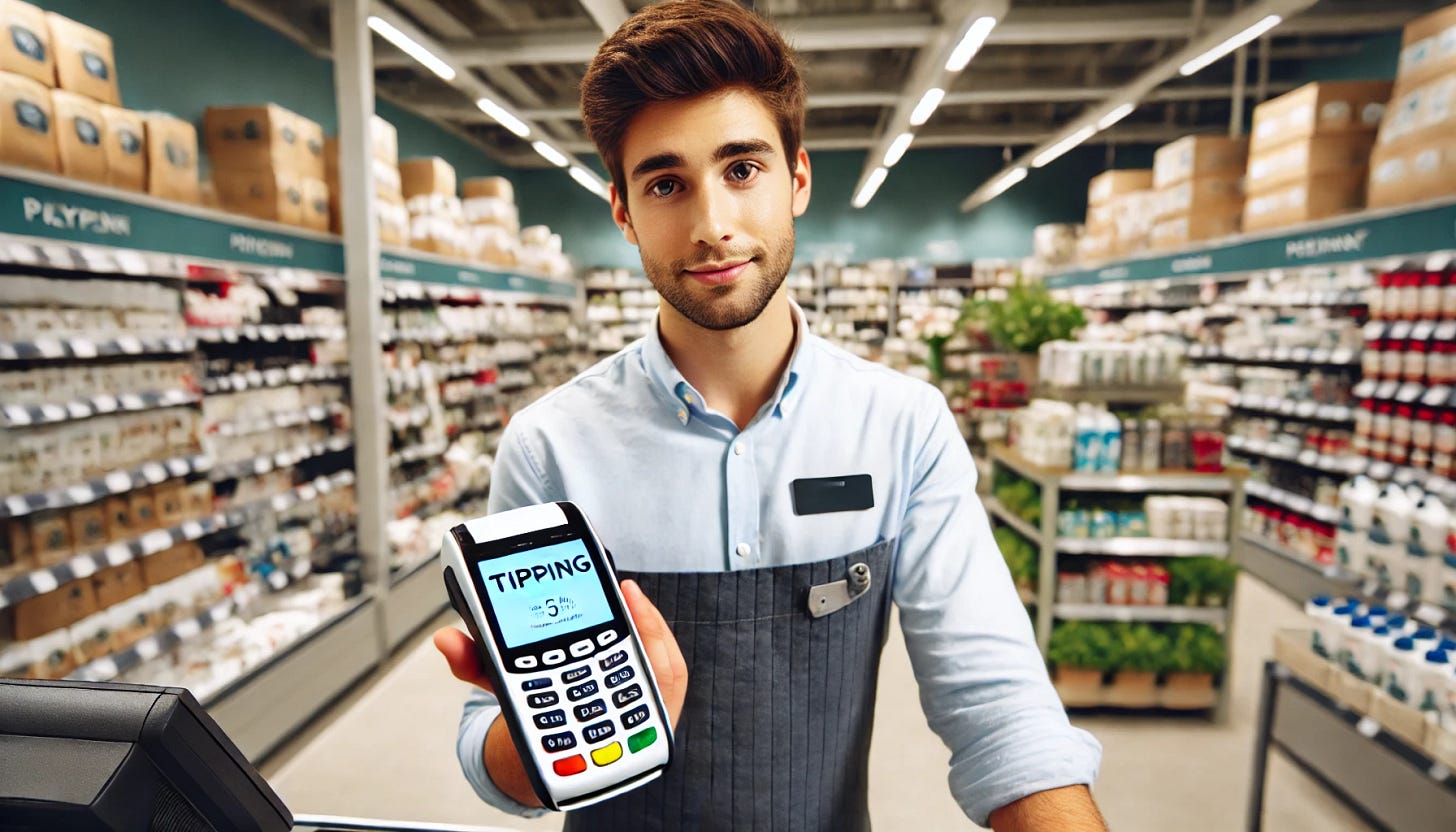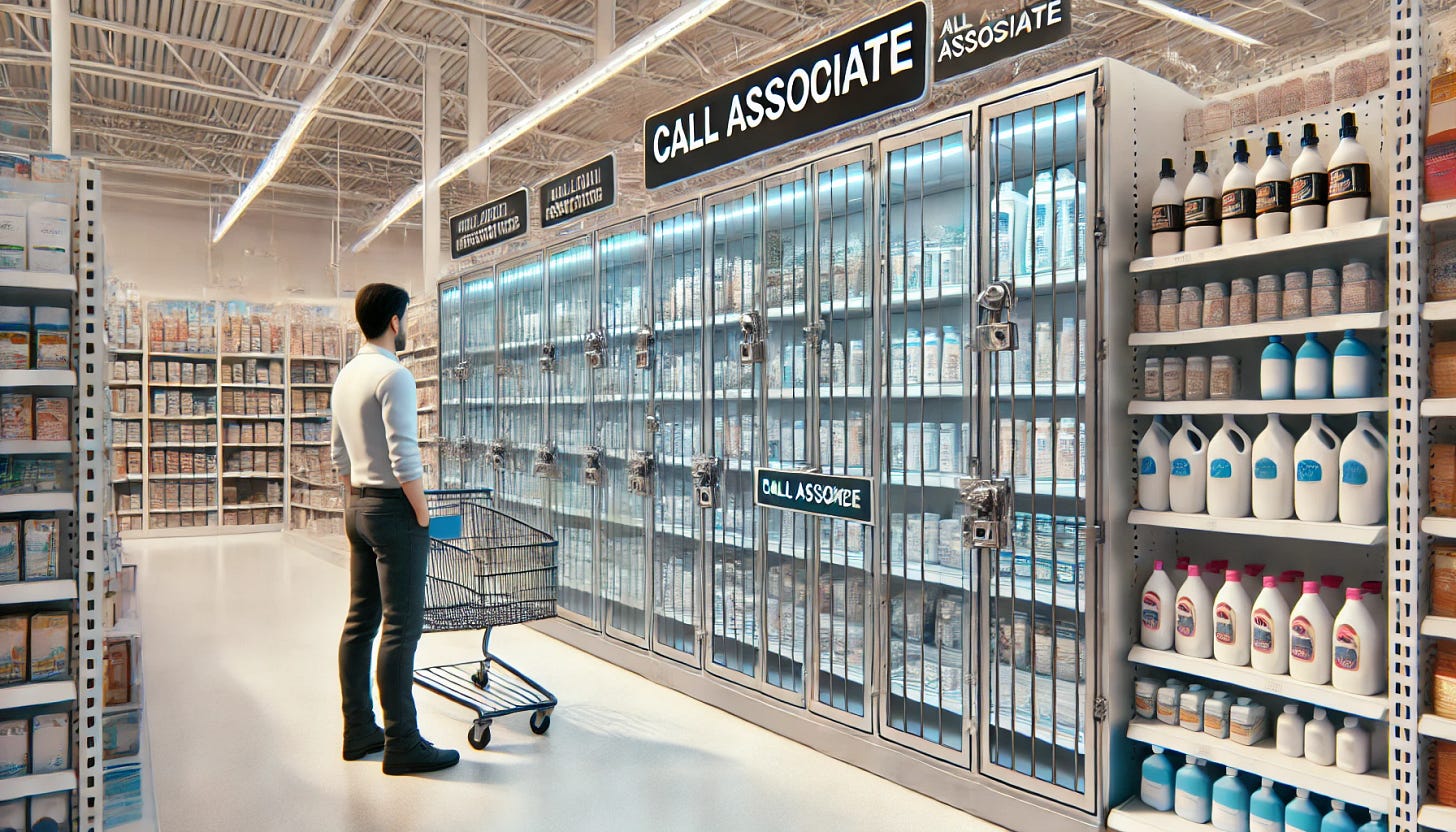Locked Shelves, Tipping Culture and the Retail Inventory Method
Here's my Thought
Hey Friends,
Each Thursday during my Here’s My Thought segment, I usually prefer to dive into a single topic but this week I couldn’t just stick to one. So this week we are diving into tipping culture spreading through retail, navigating locked shelves, and are retailers changing the way they think about inventory?
Tipping culture is out of hand
I stumbled across a strange article this week that I would love your feedback on. Tipping is making its way into retail, with 69% of shoppers saying they’re willing to tip retail workers during holiday shopping, according to a Lightspeed Commerce study. Among Gen Z, that number jumps to 89%. Nearly half of shoppers are open to tipping 10% or more for exceptional service, while 27% of retail workers say they “want” tips, and 11% “expect” them.
Retailers are increasingly adding optional tip screens at checkout, mirroring practices in hospitality. Workers report that the possibility of tips boosts their service, but critics argue tipping shifts financial responsibility from employers to customers.
COVID gave us a conscience when it came to tipping culture. It made sense, help thy neighbor in times of struggle, and hopefully we can survive and come out stronger as a community.
Tipping culture in the United States did not originate during COVID-19 but has roots dating back to the late 19th and early 20th centuries. Tipping became a norm in industries like restaurants and hospitality to supplement workers’ low wages, often as an alternative to higher base pay. However, the pandemic significantly reshaped and expanded tipping practices.
During COVID-19, tipping surged as consumers sought to support essential workers, particularly in the food and service industries. Generosity increased for delivery drivers, grocery shoppers, and restaurant staff dealing with heightened risks. Digital tipping became more prevalent due to the rise of contactless transactions, and many businesses added automated prompts for gratuities.
The pandemic also amplified awareness of wage disparities and worker reliance on tips, fueling discussions about fair pay. Post-COVID, tipping expectations have lingered or grown, leading to “tipflation,” where tips are now expected in more settings than ever before.
COVID may have been the gateway drug, but digitization has gotten us, us meaning the standard for the industry, hooked. Digitization has allowed the service industry, and now apparently retail, to hide behind the tablet, kiosk, or mobile app prior to the guilt trip that is “would you like to leave a tip?”
And since we have moved to the addiction stage, we could all use a little rehab. We have got to get back to service first and let gratuity fall to the individuals experience, and the mindset of tip entitlement is holding us back.
Locked shelves and the customer experience
It may address shrink and loss due to theft, but locked display shelves are turning off shoppers. A Consumer World poll revealed that 2 in 3 shoppers skip summoning an associate for locked items, while a Retail Brew poll found 4 in 5 shoppers do the same. Despite this, locking up products has become common, even for items under $10, to prevent shoplifting.
New data from RDSolutions sheds light on how long shoppers wait: the average wait is 7.7 minutes, with the longest wait clocking in at 46 minutes. Wait times vary by store type, with mass-market retailers averaging 8.6 minutes, grocery stores 7.5 minutes, and drugstores 6.9 minutes. In some cases, associates refused to unlock items due to being too busy.
RDSolutions found the practice pervasive, with 100% of drugstores, 88% of mass-market retailers, and 72% of grocery stores locking up at least some sub-$10 products. However, experts like Lee Kallman, CCO of RDSolutions, suggest that managers may prioritize loss prevention over sales, potentially explaining why locked cases persist despite deterring purchases.
The staff that is required to support unlocking inventory is a burden. Yes, you may not have your goods stolen as often, but more and more people will walk out dealing with this headache.
Are retailers moving away from the Retail Inventory Method?
Daphne Howland wrote an amazing article in Retail Dive identifying the age old practice of using retail price to value inventory, deemed the Retail Inventory Method (RIM). This approach, based on retail prices, distorts business metrics and decision-making, despite advances in technology. Experts criticize RIM for enabling “manipulation” with inventory valuation.





